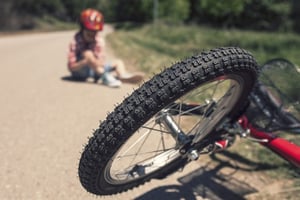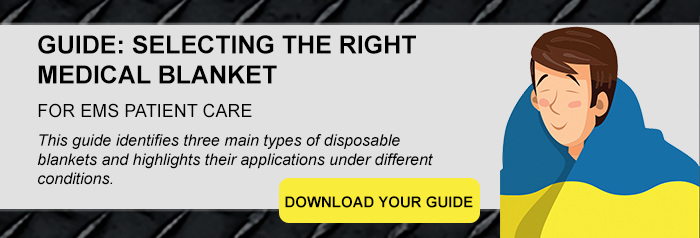 When the outdoor temperature reaches 80° F, emergency departments (ED) and the emergency personnel brace themselves--yes, "trauma season" is upon us. Many summertime activities result in calls to 911, and EMS personnel must be prepared for what they might encounter.
When the outdoor temperature reaches 80° F, emergency departments (ED) and the emergency personnel brace themselves--yes, "trauma season" is upon us. Many summertime activities result in calls to 911, and EMS personnel must be prepared for what they might encounter.
Five Summertime Traumas
1. Bicycling-related injuries
When bikes share the road with motor vehicles or children do not use safety precautions, accidents can occur and EMS personnel may be required. The National Electronic Injury Surveillance System (NEISS) report of the US Consumer Product Safety Commission (CPSC), estimated that there were upwards of 450,000 bicycle injuries requiring treatment in an Emergency Department in 2017. It would be natural to think that the vast majority of these injuries were to children, and many were. But the largest amount, over 200,000, were those in the 25 to 64 year age range.
Although it is common to walk away with only bruises after a bicycling accident, more serious head, neck, shoulder and rib injuries can, and do, occur.
2. Burns
According to this FEMA report, grills cause hundreds of injuries and thousands of fires each year. Also, based on a restrospective study for the 1980s published in the Annals of Emergency Medicine, 10,000 Americans reported to the ED with firework-related injuries each year due to either the explosive force of the firework or the resulting fire, and one-half of the firework-related injuries occur near the beginning of July.
3. Trampoline-Related Injuries
According to the American Academy of Pediatrics, three-quarters of trampoline injuries occur when more than one person jumps. The Consumer Product Safety Commission (CSPC) estimates that for 2017, trampoline-related injuries account for over 145,000 ED visits, mostly to those under 15 years of age.
4. Animal Bites
Animal-related attacks can include scratches, puncture wounds, flesh removal, and abrasions that require emergent treatment in some cases. Snake bites occur quickly, and often the patient may not be able to identify the species responsible. To prevent the poison from circulating as much as possible, EMS personnel should keep the patient still, warm, and reassured during transport to the ED. All rings and other jewelry should be removed as swelling may occur. When transporting these patients, a flexible patient transport unit like the MegaMover®, can be a lifesaver and allow you to transport the patient with the least amount of effort on the patient's part, reducing blood flow and venom circulation.
5. Aggravated Assault
According to this Special Report by the US Department of Justice, EMS personnel must be prepared for seasonal increases in household burglary and larceny as well as aggravated assault, rape and sexual assault during the summer months. After an assault with a deadly weapon, loss of blood is a major contributor to declining body temperature and the potential for the deadly triple threat of hypothermia, coagulopathy and acidosis.
Critical Needs
At Graham Medical we are pleased to be able to provide specific EMS products to aid in these situations.
Even if the patient is not shivering, he or she should be kept warm unless you have ruled hypothermia out. You can find several comfort, emergency and Mylar blankets on our website. To help in your medical blanket selection we created this guide.
We recognize that many of the injured in need of assistance are in remote locations, making a typical wheeled stretcher or wheelchair difficult, if not impossible, to use. Our portable stretcher, the MegaMover®, can carry up to 1000 pounds and is proven to work well on difficult and uneven terrains.
For more information on these, and other products, contact us here or call (800) 558-6765.

